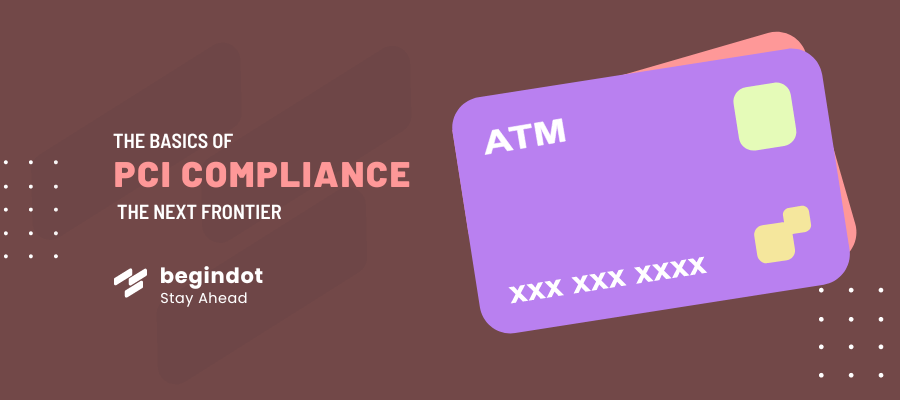Credit card information is the most valuable data type for cybercriminals as these datasets are worth millions of dollars in the black market.
Today, all sizes of companies process credit and debit card information of customers and receive credit card payments. Every company that processes, stores, and transmits financial data is under the radar of malicious actors and faces the highest cyber attack risks.
For these reasons, major credit card companies created the PCI standard to provide security guidelines for companies to secure the financial data of customers. In this article, we will examine the basics of PCI compliance.
Let’s begin with explaining PCI DSS compliance further.
What Is PCI DSS Compliance?
Payment Card Industry Data Security Standard (PCI DSS) is a technical and operational set of security specifications to safeguard credit card holders’ data.
PCI compliance was founded by major credit card companies like Visa, Mastercard, American Express, Discover Financial Services, and JCB Express. PCI seeks to enable an international framework for securing the financial data of customers.
All companies that collect, store, and transmit are subject to PCI DSS compliance and they are obligated to follow security guidelines and requirements.
PCI DSS has four compliance levels (1,2,3,4). Companies’ PCI compliance levels are determined based on the volume of transactions over a year. Companies that fall under level 4 process less than 20,000 transactions per year.
Level 3 applies to merchants that process transactions between 20,000-1 million per year. Level 2 applies to companies that process transactions between 1-6 million per year. Companies that process more than 6 transactions per year fall under level 1.
PCI requirements get stricter as the level goes from 4 to 1. But, regardless of compliance level, all companies are obligated to meet all PCI requirements to an extent.
Secure cardholder data handling framework is established in six categories by PCI compliance. PCI requirement categories consist of cardholder data protection, vulnerability management plan, network monitoring, secure network and systems management, access control restrictions, and information security policy.
The content of these categories builds a total of twelve requirement steps. PCI requirements ensure the security of cardholder data handling. Here’s a checklist for PCI compliance.
PCI Requirements
1- Install and maintain a firewall for cardholder data protection
As firewalls are the first defense mechanism of the network, properly configuring and maintaining a firewall is crucial to keep the cardholder data secure. Firewalls are highly effective tools for sensitive data protection against cyber threats because they restrict network traffic and block unapproved access. That’s why firewall establishment is the first requirement.
2. Have proper password protection
The majority of network services, point-of-sale (POS) systems, and third-party products are configured with default settings.
Cybercriminals can gain access to networks and sensitive data easily if organizations don’t reconfigure these factory settings since default passwords and usernames are widely known.
Aside from changing the password settings, organizations must regularly change the passwords of all devices and software that require one.
3. Protect stored cardholder data
All of the stored cardholder data must be encrypted. Merchants must ensure the protection of these sensitive data through cryptographic keys and algorithms and perform regular scans.
4. Encrypt cardholders’ transmitted data
Maintaining the security of cardholder data is the most crucial requirement in PCI compliance. So, merchants must also encrypt and secure cardholder data transmission over public networks.
5. Utilize antivirus software
Having antivirus software is a necessity for data protection against malware. So, organizations must utilize and frequently update their antivirus software on all devices to detect and eliminate any malware.
6. Software and system maintenance
All software and systems should be updated regularly to patch security vulnerabilities. Keep in mind that some software such as databases, antivirus software, and firewalls require more frequent updates.
7. Restrict data access
Only authorized personnel should be granted access to cardholders’ data when needed. Third parties and staff members shouldn’t have access to sensitive information.
8. Unique identification for user access
A unique set of usernames and passwords must be given to each authorized user who has access to cardholder data. User access credentials ensure accountability and reduce response time.
9. Restrict physical access
Physical access must also be restricted as much as digital access to safeguard sensitive data. Organizations must store cardholders’ data in a physically secure location and enforce strict controls and authorization.
10- Track and monitor network access
All network access and traffic must be tracked and monitored when it comes to cardholder data and primary account numbers. Access logs involving cardholder data must be maintained and reviewed continuously.
11- Regular security systems assessment
Regular security system assessments and penetration tests should be conducted to determine and patch security vulnerabilities. This procedure ensures determining the current status of security systems and improving it accordingly.
12- Maintain a cybersecurity policy
All PCI requirements must be addressed and documented with a cybersecurity policy. By maintaining a cybersecurity policy, organizations can ensure compliance and the security of their networks.
Consequences of Not Complying With PCI DSS
Not complying with PCI DSS can bring high fines and penalties. According to the severity and duration of violations, PCI authorities can apply fines between $5000 and $100,000 a month.
Fines might increase on a monthly basis as the violation’s duration becomes longer. Also, after data breach incidents, companies can be obligated to cover all re-issuance and remediation costs.
Other than these, not complying with PCI can result in additional penalties like a rise in transaction fees, and loss of credit card payment merchants for some time or permanently. Meeting PCI requirements is vital to avoid penalties and secure customers’ confidential financial data.
Last Words
The financial data of customers must be safeguarded against cyber attacks at all times.
Complying with the Payment Card Industry Data Security Standard (PCI DSS) can help companies secure financial datasets that are processed, stored, and transmitted.
In an era where cyber risks, compliance fines, and penalties are so high, every company subjected to PCI should meet its requirements and become PCI compliant.










